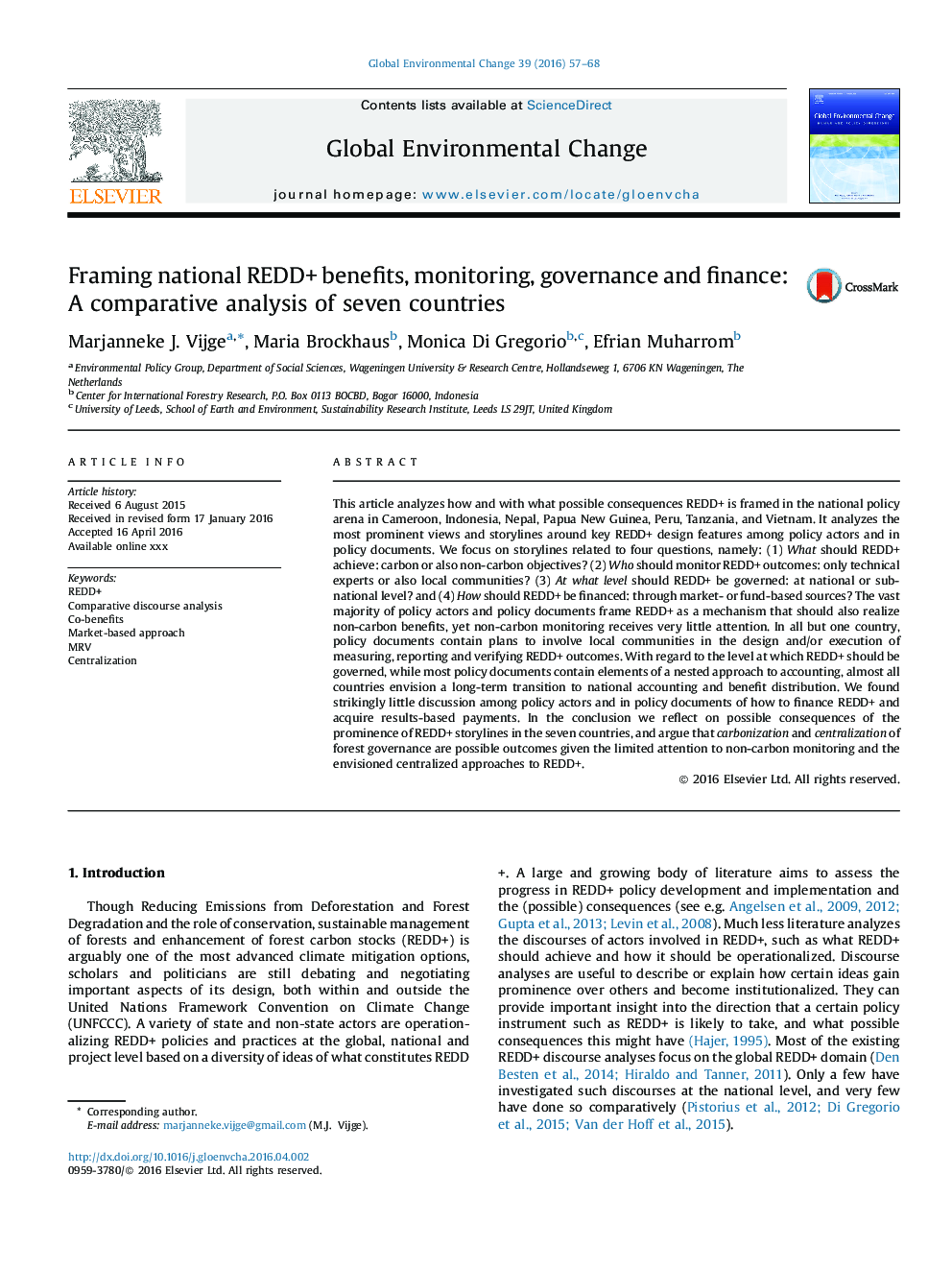| Article ID | Journal | Published Year | Pages | File Type |
|---|---|---|---|---|
| 7469314 | Global Environmental Change | 2016 | 12 Pages |
Abstract
This article analyzes how and with what possible consequences REDD+ is framed in the national policy arena in Cameroon, Indonesia, Nepal, Papua New Guinea, Peru, Tanzania, and Vietnam. It analyzes the most prominent views and storylines around key REDD+ design features among policy actors and in policy documents. We focus on storylines related to four questions, namely: (1) What should REDD+ achieve: carbon or also non-carbon objectives? (2) Who should monitor REDD+ outcomes: only technical experts or also local communities? (3) At what level should REDD+ be governed: at national or sub-national level? and (4) How should REDD+ be financed: through market- or fund-based sources? The vast majority of policy actors and policy documents frame REDD+ as a mechanism that should also realize non-carbon benefits, yet non-carbon monitoring receives very little attention. In all but one country, policy documents contain plans to involve local communities in the design and/or execution of measuring, reporting and verifying REDD+ outcomes. With regard to the level at which REDD+ should be governed, while most policy documents contain elements of a nested approach to accounting, almost all countries envision a long-term transition to national accounting and benefit distribution. We found strikingly little discussion among policy actors and in policy documents of how to finance REDD+ and acquire results-based payments. In the conclusion we reflect on possible consequences of the prominence of REDD+ storylines in the seven countries, and argue that carbonization and centralization of forest governance are possible outcomes given the limited attention to non-carbon monitoring and the envisioned centralized approaches to REDD+.
Related Topics
Life Sciences
Environmental Science
Environmental Science (General)
Authors
Marjanneke J. Vijge, Maria Brockhaus, Monica Di Gregorio, Efrian Muharrom,
